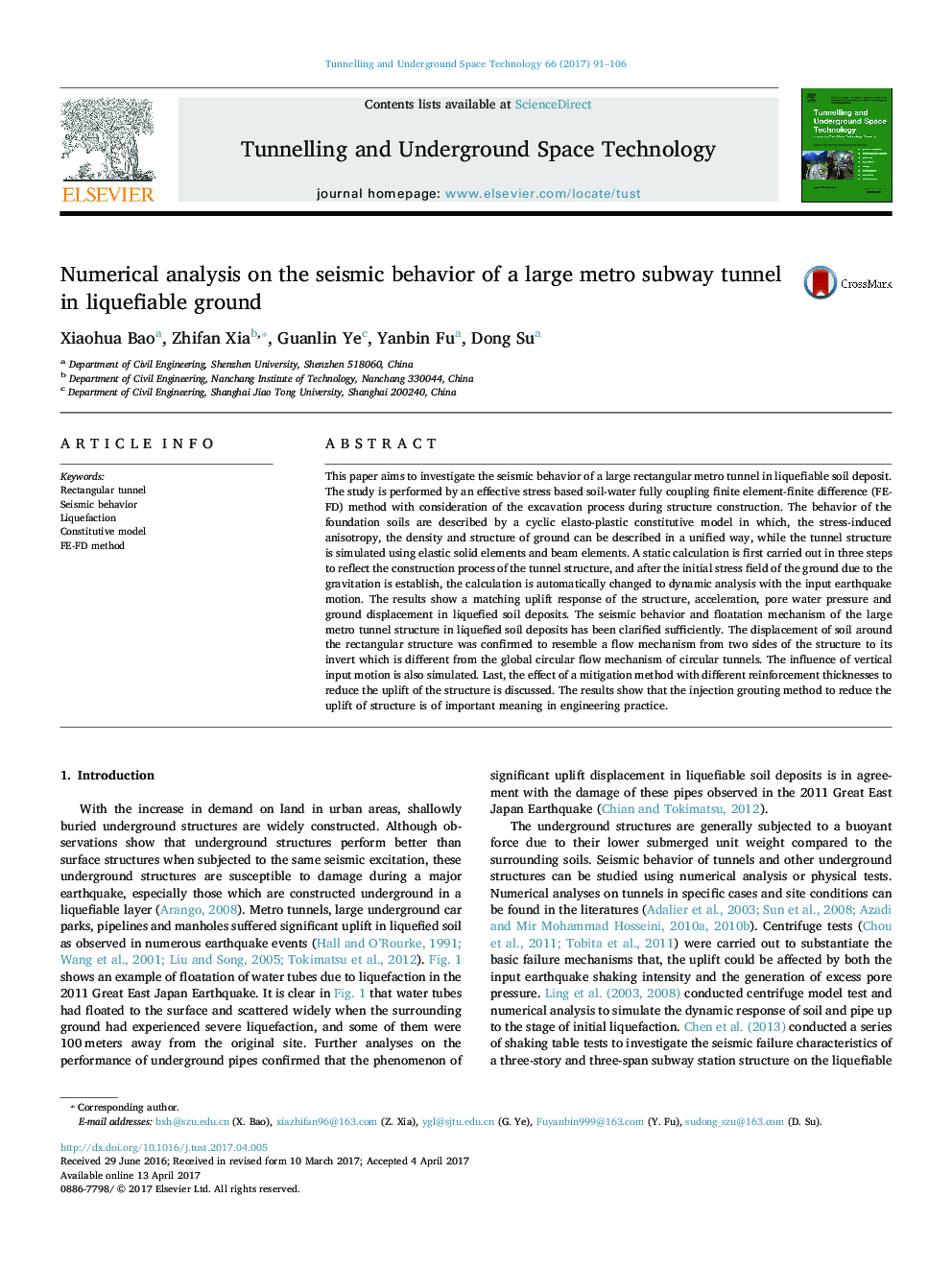| Article ID | Journal | Published Year | Pages | File Type |
|---|---|---|---|---|
| 4929333 | Tunnelling and Underground Space Technology | 2017 | 16 Pages |
Abstract
This paper aims to investigate the seismic behavior of a large rectangular metro tunnel in liquefiable soil deposit. The study is performed by an effective stress based soil-water fully coupling finite element-finite difference (FE-FD) method with consideration of the excavation process during structure construction. The behavior of the foundation soils are described by a cyclic elasto-plastic constitutive model in which, the stress-induced anisotropy, the density and structure of ground can be described in a unified way, while the tunnel structure is simulated using elastic solid elements and beam elements. A static calculation is first carried out in three steps to reflect the construction process of the tunnel structure, and after the initial stress field of the ground due to the gravitation is establish, the calculation is automatically changed to dynamic analysis with the input earthquake motion. The results show a matching uplift response of the structure, acceleration, pore water pressure and ground displacement in liquefied soil deposits. The seismic behavior and floatation mechanism of the large metro tunnel structure in liquefied soil deposits has been clarified sufficiently. The displacement of soil around the rectangular structure was confirmed to resemble a flow mechanism from two sides of the structure to its invert which is different from the global circular flow mechanism of circular tunnels. The influence of vertical input motion is also simulated. Last, the effect of a mitigation method with different reinforcement thicknesses to reduce the uplift of the structure is discussed. The results show that the injection grouting method to reduce the uplift of structure is of important meaning in engineering practice.
Related Topics
Physical Sciences and Engineering
Earth and Planetary Sciences
Geotechnical Engineering and Engineering Geology
Authors
Xiaohua Bao, Zhifan Xia, Guanlin Ye, Yanbin Fu, Dong Su,
